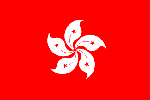
Hong Kong Business Trip (April 2004)
Hong Kong Island is the heart of Hong Kong but is only 7% of Hong Kong proper; the bulk of the place is made up of the so called New Territories.
Central is the economic hub where the corporate headquarters abound along with high rents and many of the tallest buildings in the world.
The contemporary architecture of Hong Hong is a collection of buildings generating a cityscape of high-rise buildings that is a chaotic jumble.
A great deal of the land along the present harbour front has been reclaimed from Victoria Harbour. Most of the buildings are less than half a kilometre from the waterfront, and many are just a few blocks. For example, many of the expressways along the harbour on Hong Kong were reclaimed from the sea, and the Western market used to be on the docks and it is a block inland now.
The plane on the way to Kowloon
International Financial Centre Tower in Hong Kong
Train up to the Peak - angle view
Train up to the Peak - almost at the Top
Spratt with Hong Kong island behind
Spratt with Hong Kong Island and Star Ferry behind
Stunning views from the Top of the Mountain
History
The territory was settled by Han Chinese during the
seventh century, A.D., evidenced by the discovery of an ancient tomb at
Lei Cheung Uk in Kowloon. The first major migration from northern China
to Hong Kong occurred during the Ching Dynasty (960-1279). The British
East India Company made the first successful sea venture to China in
1699, and Hong Kong's trade with British merchants developed rapidly
soon after. Despite Chinese laws prohibiting opium since 1799, the
British pursued and monopolized its trade until 1834. Concerned about
the rapid increase of opium in China, the Change Government sought to
eradicate the drug trade. When Chinese officials seized and destroyed
large quantities of opium, the British sent forces in 1840 to support
demands for a commercial treaty or cession of an island for the safety
of British nationals; this sparked the First Opium War. China lost the
war; subsequently, Britain and other Western powers, including the
United States, forcibly occupied "concessions" and gained special
commercial privileges. Hong Kong was ceded to Britain in 1842 under the
Treaty of Nanking.
Disputes over former treaties and the Chinese boarding of the British
ship Arrow started the Second Opium War (also known as the Lorcha Arrow
War), which lasted from 1856 co 1858. The Convention of Beijing, signed
in 1860, formally ended the hostilities and granted the British a
perpetual lease on the Kowloon Peninsula. The United Kingdom was
concerned that Hong Kong could not be defended unless surrounding areas
were also under British control; in 1898, it executed a 99-year lease of
the New Territories, significantly expanding the size of the Hong Kong
colony.
In the late 19th century and early 20th centuries, Hong Kong developed
as a warehousing and distribution center for U.K. trade with southern
China. After the end of World 'War II and the communist takeover it
mainland China in 1949, hundreds of thousands of people emigrated from
China to Hong Kong. This helped Hong Kong become an economic success and
a manufacturing, commercial, and tourism center. High life expectancy,
literacy, per capita income, and other socioeconomic measures attest to
Hong Kong's achievements over the last four decades.
source: http://www.worldrover.com/history/hong_kong_history.html